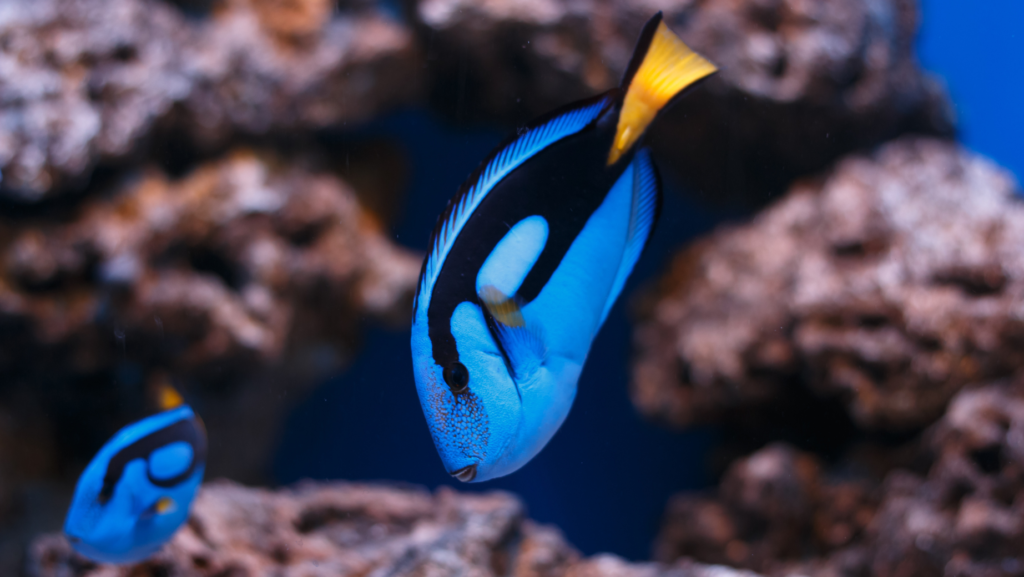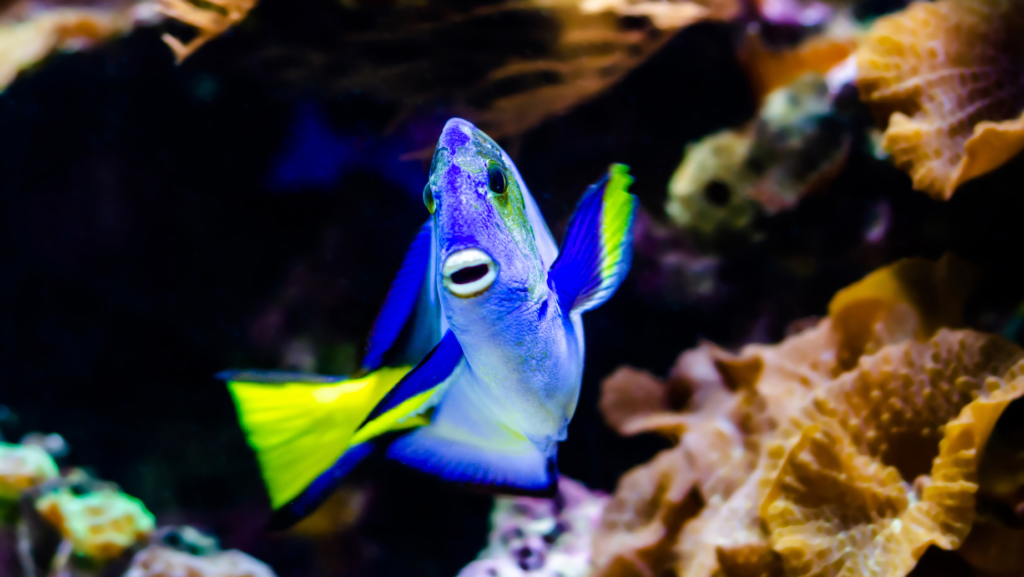The Blue Tang (Paracanthurus hepatus), a vibrant marine fish known for its striking royal blue coloration and yellow tail, inhabits the tropical waters of the Indo-Pacific region. Let’s delve into the life cycle of the Blue Tang, exploring its birth, grown-up life, food habits, habitat, reproduction, and eventual aging and death.

Birth:
Blue Tang begin their lives as tiny, transparent larvae after hatching from eggs laid by adult Blue Tangs. These eggs are typically scattered on reef surfaces, and the larvae drift in the water column until they find a suitable place to settle. During this early stage, they are vulnerable to predation, emphasizing the importance of finding shelter quickly.
Grown-Up Life:

As Blue Tangs grow, their coloration changes from transparent to the iconic vibrant blue. They are reef-dwelling fish and are commonly found in coral-rich environments, where they seek refuge in the coral crevices. Blue Tangs are characterized by a flat, oval-shaped body and a distinctive, sharp spine near their tail, which serves as a defense mechanism against predators.
Food Habits:
Blue Tangs are herbivores with a preference for algae-rich diets. Their unique dental structure, featuring fused teeth that form a beak-like structure, allows them to graze on algae from coral surfaces. Additionally, they play a vital role in controlling algae growth on coral reefs, contributing to the overall health of the ecosystem.
Habitat:

These fish primarily inhabit coral reefs and are commonly found in the surge zones where water movement is strong. Blue Tangs prefer areas with ample coral cover, as it provides both food and shelter. The intricate structure of the coral reefs offers hiding spots from predators and suitable conditions for their herbivorous feeding habits.
Reproduction:
Blue Tangs engage in complex courtship rituals before spawning. Mating pairs perform an elaborate dance, culminating in the release of eggs and sperm into the water column. Once fertilized, the eggs develop into larvae, which embark on a journey through the ocean currents. Successful settlement on a suitable substrate marks the beginning of a new Blue Tang’s life cycle.
Death:

The lifespan of Blue Tangs in the wild is estimated to be around 10 to 12 years. As they age, they may face challenges such as predation, diseases, and changes in environmental conditions. Some Blue Tangs may succumb to natural causes, completing the circle of life in the marine ecosystem.
In conclusion, the life of a Blue Tang is a captivating journey from the vulnerable larval stage to the vibrant, algae-grazing adult, contributing to the balance and diversity of coral reef ecosystems. Understanding the various stages of their life cycle sheds light on the intricate dynamics of marine life and emphasizes the importance of preserving their natural habitats for future generations.

